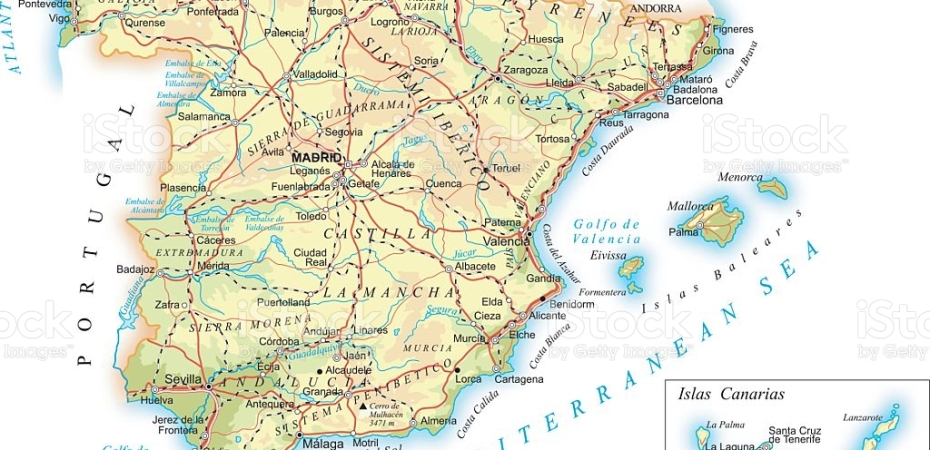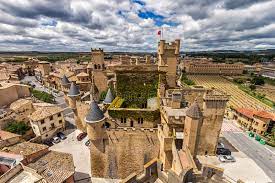
The World Wine Travel blogging group is spending the year visiting Spain. Virtually for the moment and this month, we are diving into Navarra. Each month is a different part of the country and Robin from Crushed Grape Chronicles led our group to this fantastic part of the country. You’ll find links to all of the bloggers who are participating in this month’s chat at the bottom of this post. We will be posting our stories between Friday, September 24th and Saturday,September 25th by 8:00 am EST. We will then have a chat on Twitter, at 11:00 am EST on Saturday, September 25h. You can join in the fun and find us by using the hashtag. #WorldWineTravel.
The Kingdom of Navarra calls itself the land of diversity and I have infact had a variety of wines from that area, all very different. I’ve had roses from Garnacha, dry reds from international varieties and sweet wines from Moscatel.
Navarra was an independant Kingdom from the 11th to the 15th centuries. It was the beginning of the St. James’ Way or the Cammina de Santiago, the famous pilgrimage from the Pyrenees to Santiago de Compostela where St. James is buried.
Navarra was among the first Denomination Origen (DO) regions in Spain, given the appellation in 1933 and is divided into five subzones. The Romans brought the vine to Navarra and the monasteries along the Cammino de Santiago helped to spread the vine around Spain.
The region is 60 miles long with varied temperatures along the way, rainy in the North and dry in the Middle while the South is semi desert. The area is protected by the Pyrenees and the fertile Ebro river. In addition to a variety of different microclimates, Navarra also has an abundance of soil types.

As for the Rosados, they are made with the saignee method, otherwise known as the bleeding of the grapes. While some in Spain use Clarete which means to blend red and white grapes into a rose, this is not allowed in Navarra. The Saignee method provides rosados that are fuller in body than the Provencal ones. The tend to have berry fruit aromas and flavors with a racy, nervy spine too.
Traditional rosados are made with 100% Garnacha but producers also like to experiment and have by adding other grapes to the mix such as Tempranillo, Merlot and Cabernet Sauvignon. The climate is continental with soils of marl, limestone, sand, and gravel.
Some great Rosado producers include Bodegas Ochoa, who I am featuring today. Winemaking by Javier and Adriana Ochoa and organically certified Rosados on offer such as Calendas which was the first Navarra Rosado I remember tasting. The current family working the land are the fifth and sixth generation.
Bodegas Ochoa has some of my favorite elements in a producer: long family history, female winemaker, and attention to sustainability and environmental concerns in all ways. They have been doing R&D on their 145 hectares since 1994. They have instituted water stress control mechanisms, irrigation and vegetation crop covers, Zero carbon footprint, and yeast selection in their vineyards. They have selected 4 yeasts to ferment all of their grapes taken from their vineyards.
Check out my fellow bloggers posts:
- Wendy of A Day in the Life on the Farm shares Sazon Goya Grilled Chicken Thighs and an Old Vines Garnacha
- Terri of Our Good Life shares Navarra’s Local Red Wine Drink: The Kalimotxo #worldwinetravel
- Martin of Enofylz Wine Blog shares 2016 Artazu “Pasos de San Martín” Navarra + One Pan Spanish Chorizo & Shrimp
- Nicole of Somm’s Table shares Azul y Garanza Naturaleza Salvaje Navarra Tinto with Basque Tomato Soup and Grilled Chicken
- Robin on Crushed Grape Chronicles shares Gardacho Garnacha from Navarra and Pochas Estofadas
- Cam of Culinary Adventures with Camilla shares Virtual Navarra: Spicy Lamb Meatballs + Vina Zorzal Graciano 2018
- Jeff from Food Wine Click shares Surprisingly Fresh in Navarra with Itxas Harri
- Gwendolyn Alley from Wine Predator shares Chorizo Stuffed Mushrooms with Navarra’s “Galimatias” Cuts Through The Rigmarole
- Susannah from Avvinare.com shares Discover Navarra Rosados that Brighten your Day
I can’t wait to visit and hopefully one day will walk the Cammino de Santiago, it’s always been on my bucket list.
This year we have traveled every month to Spain. It has been an amazing journey thus far. Here are those monthly posts. In January, we traveled to Rioja as our first stop on the journey. While in February, we were off to Catalonia. If it’s March, it’s time to visit Rueda. Perfect for Earth day, in April, we visited Rias Baixas in Green Spain and in May we explored Aragon. In June, we went back to Green Spain and visited Basque Country. Here’s my post on Txakoli. In July we tasted Spanish Sidras from Asturias, also part of Green Spain. In August, we visited Murcia and Valencia. Here’s my post on the Jumilla Rosados and this month Navarra has been the focus. What a long amazing virtual trip.



[…] Susannah from Avvinare shares Discover Navarra Rosados that Brighten your Day […]
[…] Susannah from Avvinare shares Discover Navarra Rosados that Brighten your Day […]
[…] Susannah from Avvinare shares Discover Navarra Rosados that Brighten your Day […]
On the hunt now for a Rosado from there! Love the round-up you included at the bottom of your post, too.
The Camino is on my bucket list as well! Bravo to Bodegas Ochoa for having a Zero Carbon footprint. That’s huge. Hopefully more and more wineries be take up the cause of Race to Zero! Just wish I’d been able to find a Rosado!
Love the Ochoa wines! Excellent selection. I would also love to do the Camino.
[…] August, we visited Murcia and Valencia. Here’s my post on the Jumilla Rosados and in September, Navarra was been the focus. What a long amazing virtual […]